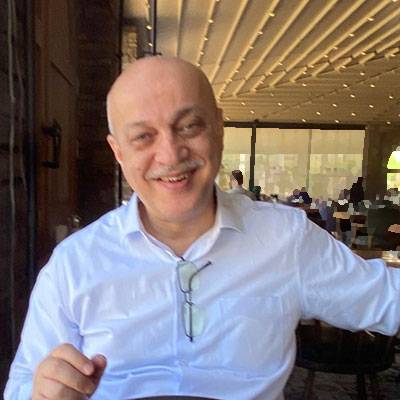
Salahattin ALTUNDAĞ
Birinci Söz'ün Etkileyici Anlam Derinliği: Bedîüzzamân Hazretler'nin Dil ve Anlatım Hârikası

Bedîüzzamân Said Nûrsî Hazretler'nin "Birinci Söz" metninin dil ve anlatım tercihleri, zengin ve çok yönlü bir okuma deneyimi sunar. Bu yazımızda, metnin “dil seçimi ve tonu” üzerine detaylı bir analiz sunuyoruz. Bedîüzzamân Hazretler'nin dil ve anlatım tercihlerinin, metnin daha geniş anlamını ve okuyucunun ona olan duygusal tepkisini nasıl etkilediğini anlamak için, dilin nasıl kullanıldığına dikkatlice bakmamız gerekiyor.
- Dinî ve Felsefî Dil: Metin, dinî ve felsefî bir dilin yoğun kullanımını sergiler. Metinde din ve felsefe kavramlarının kullanılmasının sebebi, Bedîüzzamân Hazretler'nin okuyucuya dinî ve düşünsel bir içerik sunma amacını taşımasıdır. Bedîüzzamân Said Nûrsî Hazretleri, bu ifâdeleri kullanarak, insanın hayatındaki sınırlılıklar ve zorluklar konusunda derinlemesine düşünmeye teşvik eder. Örneğin, "Aczin, fakrın hadsizdir. Düşmanın, hâcâtın nihayetsizdir" cümlesi, insanın güçsüzlüğünü (aczin) ve ihtiyaçlarının (hâcât) sonsuzluğunu vurgular. Bu, felsefî bir dil kullanarak, insanın doğasını ve dünyadaki yerini sorgulama eğiliminde olan okuyucuları hedef alır. Aynı zamanda, bu cümle ahlâkî ve dinî bir çerçevede insanın ruhânî yolculuğunu ve manevî ihtiyaçlarını anlamaya çağırır.
- Alegorik[1] Dil: Metinde alegorik ve sembolik bir dil kullanıldığına tanık oluyoruz. "Bedevî Arap çöllerinde seyahât eden adama gerektir ki, bir kabile reisinin ismini alsın ve himâyesine girsin" örneği, bir alegoridir. Bu, metnin evrensel bir tema olan insanın hayat yolculuğunu ve bu yolculukta karşılaşılan zorlukları anlatma stratejisini gösterir. Bu örnekte, çöl, hayatın zorluklarına ve belirsizliklerine metafor[2] olarak kullanılır. Bir kabile reisi, koruma ve güvence sağlayan, genellikle bir yüksek güç veya ilâhî varlık olarak anlaşılabilir. Seyyah (yolcu), ise hayat yolculuğunda olan her insanı temsil eder. Bedîüzzamân Hazretleri burada, insanın hayat yolculuğunda karşılaştığı zorluklara rağmen, ilâhî bir güçten (Allâh'tan) yardım alarak güçlü ve emin bir şekilde ilerleyebileceğini anlatır.
Bedîüzzamân Hazretleri’nin alegorik dil kullanması, metni daha anlamlı ve etkili kılar. Çünkü alegoriler, okuyucunun kendi deneyimleri ve düşünceleri üzerinden metni yorumlamasına olanak sağlar. Bu da metnin evrensel anlamda daha fazla kişiye ulaşmasını ve her okuyucunun kendi hayat deneyimleri ve düşünceleri doğrultusunda metni anlamlandırmasını sağlar. Bu da metnin her okuyucuya özgü bir anlam kazanmasına yol açar. Örneğin, çöl alegorisi, hayatın zorluklarına veya belirsizliklerine, yolculuk alegorisi ise insanın hayat yolculuğuna veya kişisel gelişimine, reis alegorisi ise ilâhî yardıma veya ruhânî bir yol göstericiye işaret edebilir. Bu, okuyucunun kendi deneyimlerine ve düşüncelerine bağlıdır.
- Öğretici Dil: Metnin dili, öğretici ve yönlendirici bir ton taşır. Metin, öğretici bir dil kullanılarak yazılmış ve bu dil, Bedîüzzamân Hazretler'nin okuyucuya aktarmak istediği mesajların alınmasını kolaylaştırır. Örneğin, metnin başında "Bil, ey nefsim" ifâdesi kullanılır. Bu, belirgin bir öğretici ton taşır ve okuyucuya Bedîüzzamân Hazretleri’nin bilgi vermek için bir konuşma yaptığını hissettirir. Bu ifâde, özellikle öğretici dilin bir özelliği olan direkt hitap özelliğini gösterir. Bedîüzzamân Hazretleri, okuyucuyu doğrudan hitap ederek ona bir şeyler öğretmeye çalışır. Bu durum, okuyucunun metne aktif olarak dâhil olmasını ve okudukları üzerinde düşünmeye teşvik eder. Bedîüzzamân Hazretler, metnin genelinde de benzer bir öğretici dil kullanarak okuyucuyu düşünmeye ve kendi düşüncelerini sorgulamaya teşvik eder.
- Duygusal Dil: Metinde duygusal bir dilin de kullanıldığına dikkat çekmek gerekir. Bedîüzzamân Hazretleri, okuyucunun duygusal yanına da hitap eder. Örneğin, "Ey mağrur nefsim, sen o seyyahsın. Şu dünya ise bir çöldür." cümlesi, okuyucunun duygusal ve empatik yanına hitap eder. Bu, okuyucunun metne sadece mantıksal düzlemde değil, aynı zamanda duygusal bir düzlemde de bağlanmasını sağlar. Bu ifâde, duygusal dilin bir örneğidir. Bu cümle, okuyucunun dünyayı ve kendi yerini düşünmesi için ona bir ayna tutar. Bu, okuyucunun hem metne hem de dünyaya ve kendi yerine karşı duygusal bir bağlantı hissetmesine yardımcı olur.
Duygusal dil, okuyucunun metne daha fazla ilgi duymasına yardımcı olur. Ayrıca, metnin teması ve konusu ile ilgili okuyucunun duygusal yanını harekete geçirerek, okuyucunun metni daha iyi anlamasını ve hatırlamasını sağlar.
- Kıyaslamalar ve Benzetmeler: Bedîüzzamân Said Nursi Hazretleri, metinde kıyaslamalar ve benzetmeleri etkili bir şekilde kullanır. "Bütün mevcudat lisan-ı hâl ile ‘Bismillâh’ der" cümlesi, okuyucuya karmaşık ve soyut kavramları somutlaştırma ve daha anlaşılır hale getirme yöntemini gösterir.
Başka bir örneğe bakalım: "Evet, bu kelime öyle mübarek bir definedir ki, senin nihayetsiz aczin ve fakrın, seni nihayetsiz kudrete, rahmete raptedip Kadîr-i Rahîmin dergâhında aczi, fakrı en makbul bir şefaatçi yapar." "Bismillâh" kelimesinin bir "define" olarak tanımlanması, bu ifâdenin değerli ve kıymetli olduğunu vurguluyor. Kendini güçsüz ve aciz hisseden bir kişiye, bu kıymetli kelime yardımcı olur. Bu ona, Kadîr-i Rahîm yani sonsuz güç ve merhamete sahip olan Allâh'ın huzurunda hâlini şefaatçi olarak sunmasına imkân sağlar. Bu benzetme, bu ifâdenin sadece bir kelime olmadığını, aynı zamanda bir kişinin manevî dünyasında önemli bir rol oynadığını ve ona güç verdiğini ifâde ediyor. Bu kıyaslamayı kullanarak, Bedîüzzamân Hazretleri, insanın kendi iç dünyasındaki durumu anlaşılır kılmak için somut bir imge[3] (define) kullanıyor. Ayrıca, bu kıyaslamalar yoluyla insanın Allâh'ın adını anmanın gücünü ve bu adın hayatındaki önemini vurguluyor.
- Soyut Kavramların Somutlaştırılması: Soyut kavramların somutlaştırılması da metnin anlatım tekniğinin bir diğer özelliğidir. Bedîüzzamân Hazretleri’nin dil ve anlatım tarzının belirgin özelliklerinden biri, soyut kavramları somutlaştırma yöntemidir. Bu yöntem, okuyucunun metni daha iyi anlamasına yardımcı olur. Örneğin, "Şu dünya ise bir çöldür." ifâdesi, anlatım tekniğinin mükemmel bir örneğidir. Çöl, genellikle hayatta kalmanın zor olduğu, su ve yiyecek gibi temel ihtiyaçların kıt olduğu bir yer olarak kabul edilir. Bedîüzzamân Hazretleri, dünyayı bir çöl olarak tasvir ederek, dünyadaki yaşamın geçici ve zorlu doğasını somut bir şekilde ifâde eder. Bu tasvir, okuyucunun yaşamın geçiciliği ve zorlukları hakkında daha derin bir kavrayışa ulaşmasına yardımcı olur.
- Retorik[4] Sorular: Bedîüzzamân Hazretleri'nin metni, okuyucuyu derinlemesine düşünmeye teşvik etmek için retorik soruları kullanır. Bu sorular, metni okurken okuyucunun kendi kişisel düşüncelerini ve duygularını keşfetmesine yardımcı olur. Bedîüzzamân Hazretleri'nin metninde, okuyucuyu düşünmeye ve kişisel refleksiyonlara itmek için retorik soruları kullanma tarzı belirgindir. Retorik sorular, cevabı belirgin olduğunda veya verilecek bir cevabın olmadığı durumlarda, bir düşünceyi veya noktayı vurgulamak için kullanılır. Aşağıdaki metinde Bediüzzaman'ın kullandığı retorik sorulara birkaç örnek verelim:
"Evet, bu kelime öyle mübarek bir definedir ki, senin nihayetsiz aczin ve fakrın, seni nihayetsiz kudrete, rahmete raptedip Kadîr-i Rahîmin dergâhında aczi, fakrı en makbul bir şefaatçi yapar. Evet, bu kelime ile hareket eden, o adama benzer ki, askere kaydolur, devlet namına hareket eder, hiçbir kimseden pervâsı kalmaz. Kanun namına, devlet namına der, her işi yapar, her şeye karşı dayanır." Bu paragrafta, retorik soru, okuyucuyu düşünmeye ve kişisel bir yansımayı teşvik etmek için kullanılan bir araçtır. İfade edilen fikirler ve düşünceler, doğrudan soru formuyla sunulmasa da okuyucunun buna cevâp vermesi ve kendi düşüncelerini keşfetmesi teşvik edilir.
- Kesin ve Doğrudan Anlatım: Bedîüzzamân Hazretleri bu metninde, okuyucuya verilmek istenen mesajın belirgin ve açık olmasını sağlamak için genellikle kesin ve doğrudan bir anlatım tercih etmiştir. Bu, metnin anlaşılabilirliğini artırır ve okuyucuya verilmek istenen mesajın net bir şekilde iletilmesini sağlar. Bu anlatım tarzı, metnin tonunu ve okuyucunun alacağı mesajı belirler. Örneğin: "Mâdem her şey mânen ‘Bismillâh’ der; Allâh nâmına, Allâh'ın nimetlerini getirip bizlere veriyorlar. Biz dahi "Bismillâh" demeliyiz. Allâh nâmına vermeliyiz, Allâh nâmına almalıyız. Öyle ise, Allâh nâmına vermeyen gâfil insanlardan almamalıyız." ifâdesi, okuyucuya doğrudan ve kesin bir talimat verir. Bu talimat, okuyucunun Allah'ın ismini her zaman anması ve O'na tam bir teslimiyet içinde olması gerektiğini belirtir. Bu doğrudan ve kesin anlatım, okuyucuya verilmek istenen dini ve ahlaki mesajın belirgin ve açık bir şekilde ifâde edilmesini sağlar.
Bedîüzzamân Said Nûrsî Hazretleri'nin "Birinci Söz" metninin “dil seçimi ve tonu”, okuyucuya hem bilgi verici hem de duygusal ve ruhânî bir deneyim sunduğu söylenebilir. Metinde, felsefî ve dinî terminoloji, alegoriler, sembolizm, retorik sorular ve daha fazlası gibi birçok farklı dil ve anlatım tekniği kullanılır. Bu, metni daha katmanlı ve zengin kılar, fakat aynı zamanda her biri kendi içinde bir anlam taşıyan ve bir araya geldiğinde metni daha derin ve kapsamlı hâle getiren bir dizi farklı unsuru içerir.
Sonuç olarak, Bedîüzzamân Said Nûrsî Hazretleri'nin "Birinci Söz" metni, dil ve anlatım tekniklerinin çeşitli ve etkileyici bir kullanımıyla, okuyucuya derin, zengin ve çok boyutlu bir okuma deneyimi sunar. Bu metin, sadece dinî ve felsefî kavramları öğretmekle kalmaz, aynı zamanda okuyucunun bu kavramları kişisel düzeyde deneyimlemesini ve içselleştirmesini teşvik eder. Bu nedenle, "Birinci Söz" hem içerdiği derin anlamlar hem de sunduğu etkileyici dil ve anlatım teknikleri açısından, Risale-i Nur Külliyatı'nda önemli bir yere sahiptir.
[1] Alegorik: Alegorik, sembollerle anlatılan metinlere verilen bir isimdir. Alegori ise, bir fikri, duyguyu veya kavramı somutlaştırmak ve daha iyi anlaşılmasını sağlamak için simgesel bir bağ kurma sanatıdır. Alegori, genellikle istiare, teşhis ve mecaz gibi edebî sanatlarla ifâde edilir. Alegorik eserler, okuyucuya veya izleyiciye derin ve zengin bir anlam sunar.
[2] Metafor: Metafor, bir sözcüğün veya söz öbeğinin, gerçek anlamından farklı bir anlamda kullanılmasıdır. Metafor, dilin zenginleşmesine ve ifâde gücünün artmasına katkıda bulunur. Edebiyâtta ise metafor, yazarın duygu ve düşüncelerini daha etkili bir şekilde aktarmasını sağlar. Örneğin, "Gözleri yıldızlar gibi parlıyordu." cümlesinde "yıldızlar" metaforik bir anlam taşır. Burada yazar, gözlerin parlaklığını ve güzelliğini vurgulamak istemiştir.
[3] İmge: Dilbilimi ve edebiyâtta "imge", bir sözcüğün veya söz öbeğinin anlamını zenginleştiren veya değiştiren bir sanat aracıdır. İmge, bir nesne, olay veya durumu başka bir nesne, olay veya durumla ilişkilendirerek okuyucunun veya dinleyicinin zihinsel görüntüsünü canlandırır. İmge, dilin özgün kullanımını gösterir ve edebî metinlere estetik değer katar. Dilbilimciler ve edebiyâtçılar, imgenin çeşitli türlerini ve işlevlerini incelemektedir.
[4] Retorik: Retorik, insanları etkilemek ve iknâ etmek için kullanılan söz sanatıdır. Retorik hem edebiyâtta hem de dilbilimde önemli bir yere sahiptir. Edebiyâtta retorik, yazarın okuyucuyu duygusal veya mantıksal olarak etkilemek için kullandığı dil araçlarıdır. Dilbilimde retorik, konuşmacının dinleyiciyi belirli bir amaca yönelik olarak yönlendirmek için kullandığı dil stratejileridir. Retorik, Antik Yunan'dan beri farklı filozoflar ve düşünürler tarafından incelenmiş ve tanımlanmıştır. Retorik, sadece sözlü veya yazılı değil, aynı zamanda görsel olarak da ifâde edilebilir. Retorik, iletişimin gücünü ve etkisini arttıran bir sanattır.
Bu kelimelerin Osmanlıca tam karşılıklarını bulmak tamamen mümkün olmayabilir, çünkü modern dil biliminde ve edebiyatta kullanılan bu terimler genellikle Osmanlı döneminde kullanılan terimlerden farklıdır. Ancak, bu kavramların Osmanlıca'daki karşılıkları, genellikle bu terimlerin anlamına en yakın olan veya bunlarla ilişkilendirilebilecek olan terimler olacaktır. Kavramların muhtemel Osmanlıca eşanlamlılarını aşağıdaki gibi sıralanabilirim:
- Alegorik: Mecaz-ı Mürsel (Bir düşünceyi, bir fikri ya da bir gerçeği başka bir şeyin yerine koyarak anlatan sanat.)
- Metafor: İstiare (Bir sözcüğü ya da söz öbeğini gerçek anlamından farklı bir anlamda kullanarak benzetme yapan sanat.)
- İmge: Terim bu şekliyle modern Türkçeye geçmiştir, ancak muhtemelen Osmanlıca'da anlamına en yakın terimler "tasvir" (bir şeyi ayrıntılı bir şekilde betimleme) veya "hayal" (bir şeyi zihinde canlandırma) olabilir.
- Retorik: Belagat veya hitabet (dilin etkileyici ve ikna edici kullanımı)
***
METNİN İNGİLİZCESİ
THE PROFOUND SIGNIFICANCE OF THE "FIRST WORD": BEDÎÜZZAMÂN'S MARVEL OF LANGUAGE AND NARRATION
The language and narrative choices of Bedîüzzamân Said Nûrsî in his "First Word" text offer a rich and multi-dimensional reading experience. In this article, we provide a detailed analysis of the "language selection and tone" of the text. To understand how Bedîüzzamân's language and narrative choices affect the broader meaning of the text and the reader's emotional response to it, we must carefully examine how language is used.
- Religious and Philosophical Language: The text exhibits an extensive use of religious and philosophical language. The reason for using religious and philosophical concepts in the text is that Bedîüzzamân aims to present the reader with a religious and intellectual content. Bedîüzzamân Said Nûrsî, through these expressions, encourages deep contemplation on the limitations and challenges in human life. For example, the sentence "The limits of your weakness and poverty are infinite. Your enemies, your needs are endless" emphasizes the powerlessness of human beings and the infinity of their needs. These targets readers inclined to question human nature and their place in the world using philosophical language. Simultaneously, this sentence calls to understand the spiritual journey and spiritual needs of the human being within a moral and religious framework.
- Allegorical Language: We observe the use of allegorical and symbolic language in the text. The example of "A man traveling in the Bedouin Arab deserts must adopt the name of a tribal chief and seek his protection" is an allegory. This shows the text's strategy of narrating a universal theme, the journey of human life, and the challenges encountered in this journey. In this example, the desert is used as a metaphor for life's challenges and uncertainties. A tribal chief can be understood as a protective and assuring entity, generally a higher power or divine being. The traveler represents every human being on the journey of life. Here, Bedîüzzamân suggests that despite the challenges encountered in the journey of life, one can proceed strongly and confidently by seeking help from a divine power (God).
The use of allegorical language by Bedîüzzamân makes the text more meaningful and effective. This is because allegories allow the reader to interpret the text based on their experiences and thoughts, enabling the text to reach more people universally and allowing each reader to understand the text according to their life experiences and thoughts. This leads to each reader attributing a unique meaning to the text. For example, the desert allegory may refer to the challenges or uncertainties of life, the journey allegory to the journey of human life or personal development, and the chief allegory to divine help or a spiritual guide. This is dependent on the reader's experiences and thoughts.
- Didactic Language: The language of the text bears an instructive and guiding tone. The text is written using a didactic language, which facilitates the receipt of messages Bedîüzzamân wishes to convey to the reader. For instance, the phrase "Know, O my soul" is used at the beginning of the text. This carries a distinct didactic tone and gives the reader a sense of Bedîüzzamân delivering a discourse for imparting knowledge. This phrase exemplifies direct address, a characteristic of didactic language. Bedîüzzamân, by addressing the reader directly, aims to teach something. This engages the reader actively with the text and encourages reflection on the content read. Throughout the text, Bedîüzzamân uses similar didactic language to prompt the reader to reflect and question their thoughts.
- Emotional Language: It's worth noting that emotional language is also utilized in the text. Bedîüzzamân appeals to the emotional side of the reader. For instance, the sentence, "O arrogant soul of mine, you are that traveler. This world is a desert." appeals to the emotional and empathetic side of the reader. This enables the reader to connect to the text not only logically but also on an emotional level. This phrase exemplifies emotional language. This sentence holds a mirror for the reader to reflect on the world and their place in it. This facilitates the reader to establish an emotional connection both with the text and their place in the world.
Emotional language enhances the reader's interest in the text. Also, by activating the reader's emotional side relevant to the theme and subject of the text, it assists the reader in better understanding and remembering the text.
- Similes and Metaphors: Bedîüzzamân Said Nûrsî effectively uses comparisons and metaphors in the text. The sentence, "All beings say 'In the name of God' with the tongue of their state," demonstrates the method of rendering complex and abstract concepts tangible and comprehensible to the reader.
Let's consider another example: "Indeed, this word is such a blessed treasure that your infinite weakness and poverty tie you to infinite power and mercy, making your helplessness and poverty the most accepted intercessors in the court of the All-Powerful, the All-Merciful." Describing the word "In the name of God" as a "treasure" emphasizes its valuable and precious nature. It aids a person feeling weak and helpless to possess, allowing them to present their state as an intercessor in the presence of the All-Powerful, the All-Merciful - God, who is of infinite power and mercy. This metaphor conveys that this is not merely a word, but it plays a significant role in a person's spiritual world, providing them strength. By using this comparison, Bedîüzzamân uses a tangible image (treasure) to make comprehensible the inner state of a person. Furthermore, through these comparisons, he underscores the power of uttering God's name and the importance of this act in a person's life.
- Concretization of Abstract Concepts: Another distinctive feature of the text's narrative technique is the concretization of abstract concepts. One of the prominent features of Bedîüzzamân's linguistic and narrative style is his method of making abstract concepts tangible. This technique assists the reader in better comprehending the text. For instance, the phrase "This world is a desert" is an excellent example of the narrative technique. A desert is generally considered a place where survival is challenging, with scarce fundamental needs like water and food. By depicting the world as a desert, Bedîüzzamân articulates the temporary and challenging nature of worldly life in a tangible way. This depiction aids the reader in attaining a deeper understanding of the transiency and hardships of life.
- Rhetorical Questions: Bedîüzzamân's text employs rhetorical questions to provoke in-depth reflection in the reader. These questions facilitate the exploration of the reader's personal thoughts and feelings while reading the text. The manner in which Bedîüzzamân uses rhetorical questions in his text to provoke thought and personal reflections is evident. Rhetorical questions are used to emphasize a thought or point when the answer is apparent or when there is no answer to be given. Let's provide a few examples of the rhetorical questions that Bedîüzzamân uses in the following text:
"Indeed, this word is such a blessed treasure that your infinite weakness and poverty tie you to infinite power and mercy, making your helplessness and poverty the most accepted intercessors in the court of the All-Powerful, the All-Merciful. Indeed, one who acts with this word is like a man who enlists in the army and acts in the name of the state, not caring about anyone else. In the name of the law, in the name of the state, he says, does every job, stands against everything." In this paragraph, the rhetorical question serves as a tool used to encourage the reader to think and prompt personal reflection. Although the ideas and thoughts expressed are not directly posed in the form of a question, the reader is encouraged to respond and explore their own thoughts.
- Definitive and Direct Expression: Bedîüzzamân generally prefers a definitive and direct form of expression in this text to ensure that the intended message to the reader is clear and explicit. This enhances the text's comprehensibility and ensures the clear conveyance of the message to be delivered to the reader. This style of expression determines the tone of the text and the message the reader will receive. For instance, the statement: "Since everything says 'Bismillâh' in spirit; they bring and give us Allâh's blessings in the name of Allâh. We too should say 'Bismillâh'. We should give in the name of Allâh, we should take in the name of Allâh. So, we should not take from heedless people who do not give in the name of Allâh." provides the reader with a direct and definitive instruction. This directive specifies that the reader should always mention the name of Allâh and should exist in full submission to Him. This direct and definitive narrative ensures the explicit and clear expression of the religious and moral message intended for the reader.
The language selection and tone of Bedîüzzamân Said Nûrsî's text, "The First Word", can be said to offer the reader both an informative and an emotional and spiritual experience. The text employs a multitude of different language and narrative techniques, including philosophical and religious terminology, allegories, symbolism, rhetorical questions, and more. This makes the text more layered and richer, but it also includes a series of different elements, each carrying its own meaning, and when combined, making the text deeper and more comprehensive.
In conclusion, Bedîüzzamân Said Nûrsî's text, "The First Word", offers a deep, rich, and multidimensional reading experience to the reader with a diverse and impressive use of language and narrative techniques. This text not only teaches religious and philosophical concepts, but also encourages the reader to personally experience and internalize these concepts. Therefore, "The First Word", in terms of both the deep meanings it contains and the impressive language and narrative techniques it offers, holds a significant place in the Risale-i Nur Collection.
Bedîüzzamân Said Nûrsî
The Risale-i Nur Collection
The Book of Words



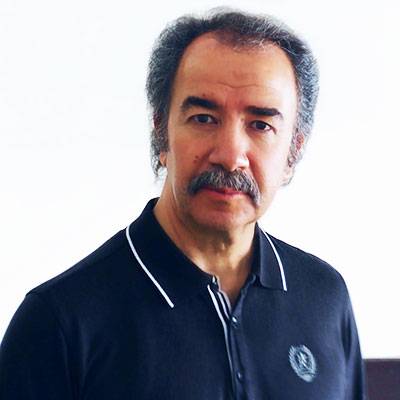
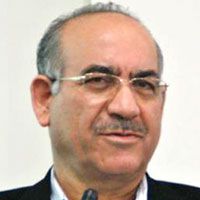
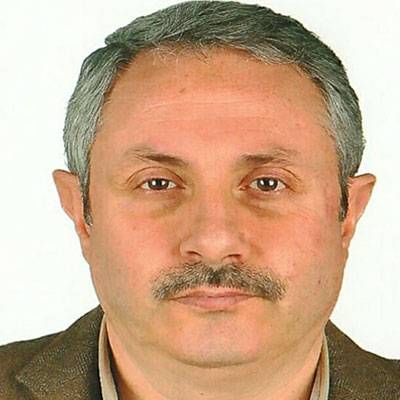

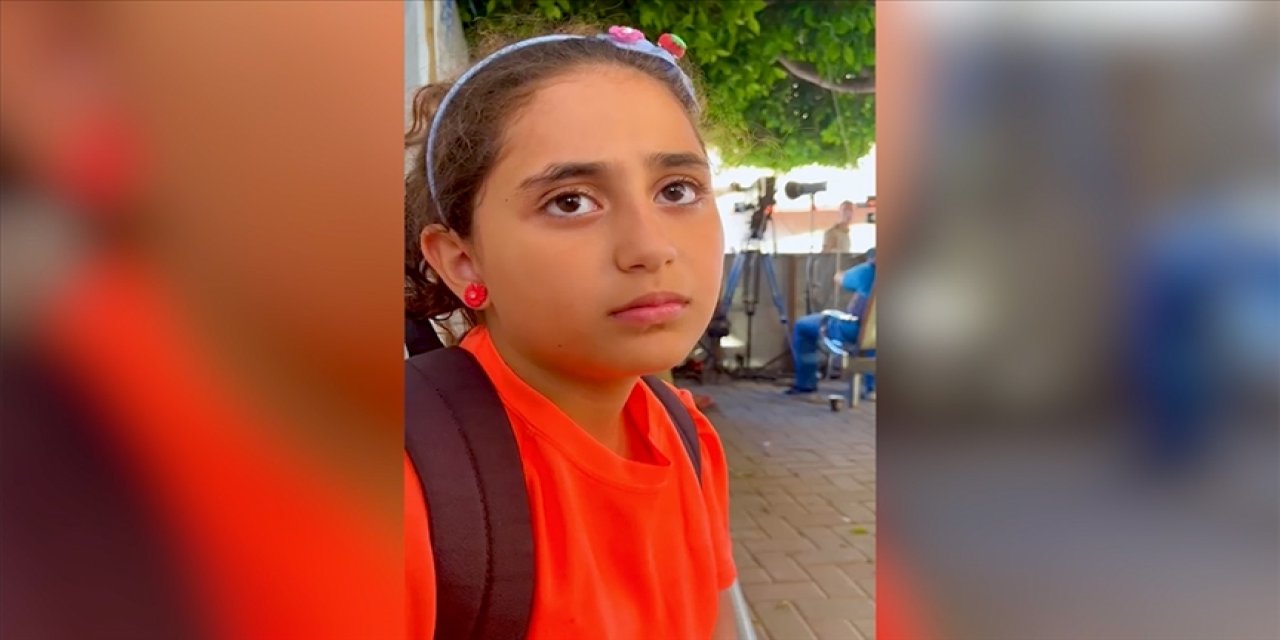


Küfür, hakaret, rencide edici cümleler veya imalar, inançlara saldırı içeren, imla kuralları ile yazılmamış,
Türkçe karakter kullanılmayan ve BÜYÜK HARFLERLE yazılmış yorumlar
Adınız kısmına uygun olmayan ve saçma rumuzlar onaylanmamaktadır.
Anlayışınız için teşekkür ederiz.